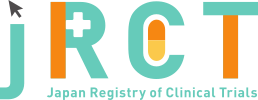臨床研究等提出・公開システム
|
Feb. 28, 2020 |
|
|
June. 07, 2022 |
|
|
jRCT2080225099 |
Phase 2 Single Arm Study for Efficacy and Safety of Ropeginterferon alfa-2b for Japanese Polycythemia Vera (PV) Patients for Whom the Current Standard of Treatment is Difficult to Apply |
|
Clinical study for investigating Ropeginterferon alfa-2b in Japanese Polycythemia Vera Patients |
|
July. 15, 2021 |
|
29 |
|
The ITT population and the safety population both comprised 29 patients. Patient characteristics were slightly more women (16/29 [55.2%]) than men (13/29 [44.8%]), and the median (range) age was 54.0 (26-72) years. All patients were Japanese, and all had an ECOG PS of 0. Approximately half had previously used HU (15/29 [51.7%]). Twenty-seven patients had a JAK2 V617F mutation (allele burden mean +- SD 72.2% +- 23.3%). |
|
27 patients completed the study; one patient withdrew consent, and one discontinued due to a TEAE (silent thyroiditis that did not recover within 8 weeks). All 27 patients who completed the study subsequently transitioned into the extension study. |
|
No new safety concerns were identified in Japanese patients when compared with previous studies of ropeginterferon alfa-2b in European populations; the most common treatment-related adverse events were alopecia (55.2%), fatigue (27.6%) and influenza-like illness (27.6%). Most treatment-related adverse events were mild or moderate, with none of grade >= 3. |
|
CHRs to ropeginterferon alfa-2b treatment were observed in 1/29 (3.45%) patients at week 12, and increased over time. More than half of the patients (15/29 [51.7%]) had achieved a CHR at week 52. Eight of 29 (27.6%) patients achieved the primary endpoint (durable CHR without phlebotomy at weeks 36 and 52) during the study period. |
|
Hematocrit, platelet count, and white blood cell count decreased over 52 weeks of treatment with ropeginterferon alfa-2b; mean (SD) changes from baseline at the end of treatment were - 5.5% (6.7%), - 493.6 x 10^9/ L (374.9), and - 11.7 x 10^9/L (8.4), respectively. The mean of all parameters improved to their target value (hematocrit less than 45%, platelets less than 400,000/microlitter and leukocytes less than 10,000/microlitter) ranges. The baseline JAK2 V617F allele burden decreased over 52 weeks of treatment, and the rate of molecular response to ropeginterferon alfa-2b increased over the 52-week treatment period . Twentyseven patients completed the study. Of the 27 patients, 26 patients had a JAK2 V617F mutation, and changes in the JAK2 V617F allele burden were analyzed for the 26 patients. The mean (SD) change in allele burden from baseline to end of treatment (n = 26) was - 19.2% (22.6%). The median (range) allele burden at week 52 (n = 26) was 52.5% (6.2%-92.0%) |
|
This phase 2 study demonstrated ropeginterferon alfa-2b to be a safe and efficacious treatment option in Japanese patients with PV, regardless of patients' estimated risk of thrombosis. |
|
April. 16, 2022 |
|
https://link.springer.com/article/10.1007/s12185-022-03341-9 |
No |
|
| version: date: |
PharmaEssentia Japan K.K. |
||
Akasaka Center Bldg., 12F, 1-3-13 Moto-akasaka, Minato, Tokyo |
||
+81-3-6910-5103 |
||
hiroaki_kawase@pharmaessentia.com |
PharmaEssentia Japan K.K. |
||
Akasaka Center Bldg., 12F, 1-3-13 Moto-akasaka, Minato, Tokyo |
||
+81-3-6910-5103 |
||
hiroaki_kawase@pharmaessentia.com |
completed |
Dec. 24, 2019 |
||
| 30 | ||
Interventional |
||
Open, Single arm, multi-center trial |
||
treatment purpose |
||
2 |
||
1. Male or female patients more than or equal to 20 years old |
||
1. Patients with symptomatic splenomegaly |
||
| 20age old over | ||
| No limit | ||
Both |
||
polycythemia vera (PV) |
||
investigational material(s) |
||
safety |
||
safety |
||
| PharmaEssentia Japan K.K. | |
| - |
| - | |
| - |
| Institutional Review Board of Juntendo University Hospital | |
| 3-1-3 Hongo, Bunkyo-ku, Tokyo 113-8431 | |
| approved | |
Dec. 19, 2019 |
| NCT04182100 | |
| ClinicalTrials.gov |
| JapicCTI-205194 | |
| Japan |
